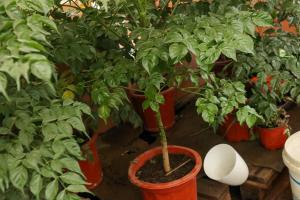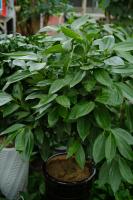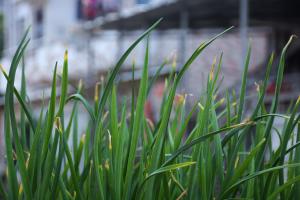What is White Spots on Tomato Plant Leaves?
One of the most common problems that tomato growers face is the appearance of white spots on the leaves of their plants. These spots can be a sign of a variety of fungal or bacterial diseases, and they can severely impact the health and productivity of the plant if left untreated. In this article, we will explore the different types of white spots that can appear on tomato plant leaves, their causes, symptoms, and effective treatments.
Types of White Spots on Tomato Plant Leaves
There are different types of white spots that can appear on tomato leaves, and each one is caused by a different type of disease. Some of the most common types include:
Powdery Mildew
Powdery mildew is a fungal disease that can appear on the leaves of tomato plants. It typically starts as small, white or gray spots on the upper surfaces of the leaves, and can quickly spread to cover the entire leaf. In severe cases, the entire plant can become infected, and the leaves may turn yellow, wilt, and eventually die.
Bacterial Spot
Bacterial spot is a disease that is caused by the bacterium Xanthomonas campestris. It typically appears as small, raised, white spots on the leaves of the tomato plant, which can later turn brown or black. It can also cause stem and fruit lesions, resulting in a reduced yield.
Causes of White Spots on Tomato Plant Leaves
The appearance of white spots on tomato plant leaves can be caused by a variety of factors, including:
Fungal or Bacterial Infections
Fungal and bacterial infections are some of the most common causes of white spots on tomato plant leaves. These diseases are caused by fungi and bacteria that thrive in warm, moist conditions, and can be spread through wind, water, or contact with infected plants or soil.
Environmental Factors
Environmental factors such as humidity, temperature, and light conditions can also play a role in the appearance of white spots on tomato plant leaves. For example, plants that are exposed to high levels of humidity or low levels of light are more likely to develop fungal infections.
Symptoms of White Spots on Tomato Plant Leaves
The symptoms of white spots on tomato plant leaves can vary depending on the type of disease that is causing the spots. In general, however, some common symptoms include:
White or Gray Spots on Leaves
This is the most common symptom. White or gray spots that appear on the upper surfaces of the leaves are usually indicative of powdery mildew infections.
Brown or Black Spots on Leaves
As the white spots on the leaves develop, they can turn brown or black. This is usually indicative of bacterial spot infections.
Leaf Curling and Yellowing
As the disease progresses, the leaves of the tomato plant may curl and turn yellow, eventually leading to wilting and death of the plant.
Effective Treatment for White Spots on Tomato Plant Leaves
Once white spots appear on tomato plant leaves, it is important to take action immediately to prevent the spread of the disease. Here are some effective treatments for white spots on tomato plant leaves:
Fungal and Bacterial Control
If the white spots are caused by a fungal or bacterial infection, it is important to use fungicides or bactericides to eliminate the disease. Some effective products include copper fungicides, sulfur fungicides, and neem oil.
Cultural Practices
Implementing healthy cultural practices can also help prevent the occurrence of white spots on tomato plant leaves. This includes pruning to increase air circulation and sunlight exposure, watering at the base of the plant to avoid wetting the leaves, and removing infected plant debris from the garden.
Conclusion
White spots on tomato plant leaves can indicate a variety of fungal or bacterial infections that can significantly impact the health and productivity of the plant. By understanding the different types of white spots, their causes, symptoms, and effective treatments, tomato growers can take the necessary steps to prevent and manage these diseases, ensuring healthy and fruitful tomato plants.

 how many times do yo...
how many times do yo... how many planted tre...
how many planted tre... how many pine trees ...
how many pine trees ... how many pecan trees...
how many pecan trees... how many plants comp...
how many plants comp... how many plants can ...
how many plants can ... how many plants and ...
how many plants and ... how many pepper plan...
how many pepper plan...































